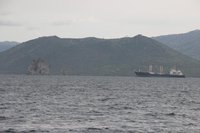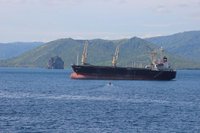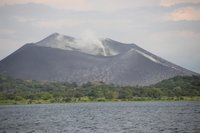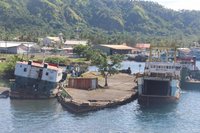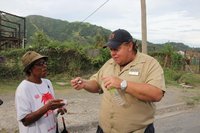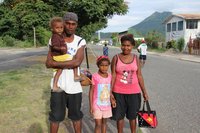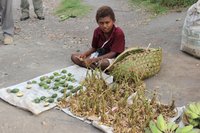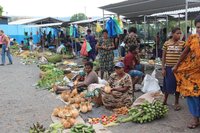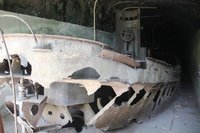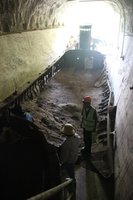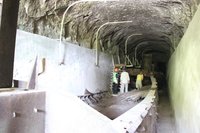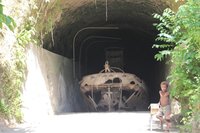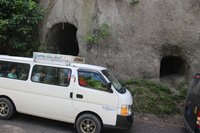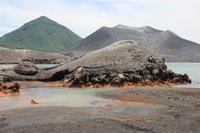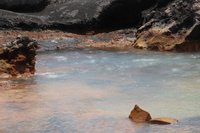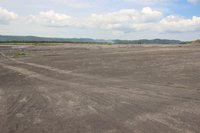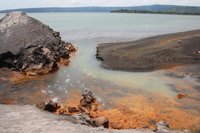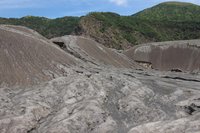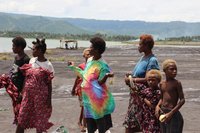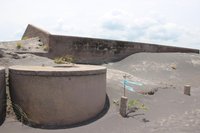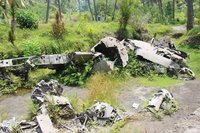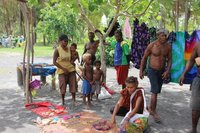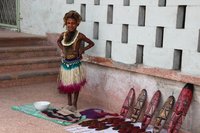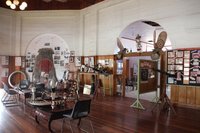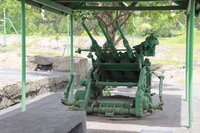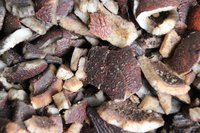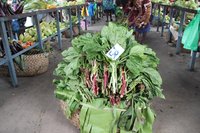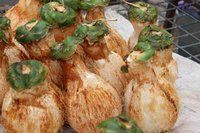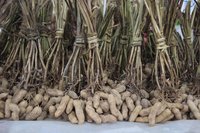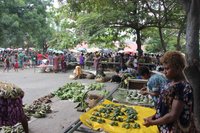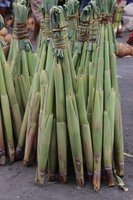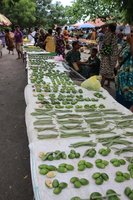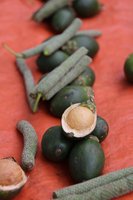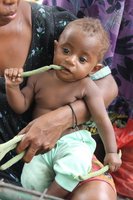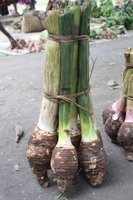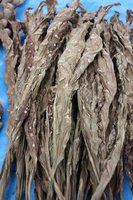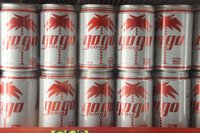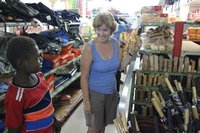| ||||||||||||||||||||||||||||||||||||||||||
 |
||||||||||||||||||||||||||||||||||||||||||
|
Rabaul  Situated at the eastern end of New Britain Island in Simpson Harbour, Rabaul has always been known for its spectacular setting. The harbour is a huge flooded caldera of an ancient volcano and is ringed by six volcanoes, one of which, Mt. Tavurvur, is still active.
During more than 100 years of settlement, Rabaul has been rocked and smothered by massive volcanic eruptions and war. The most recent major volcanic eruption was in September 1994, when Tavurvur and Vulcan covered much of Rabaul and the surrounding villages with ash. This destruction resulted in the nearby coastal town of Kokopo becoming the administrative and tourism centre for Rabaul. We set off to explore the eerie ghost town
of old Rabaul sitting metres under tons of
ash. Firstly, we visited the tunnel in
which there are five huge barges that were pulled along rails
to the shore and back by Indian prisoners
of war. In WWII the Japanese occupation in 1942 saw the building of hundreds of kilometres of tunnels underneath the town and portions of the Gazelle Peninsula for protection against constant Allied bombing raids. It’s hard to miss these tunnels and the rusting relics left by the retreating forces. Dozens of sunken aircraft and ships dot the harbour and to the north are sea caves used as drop-off points by Japanese submarines. 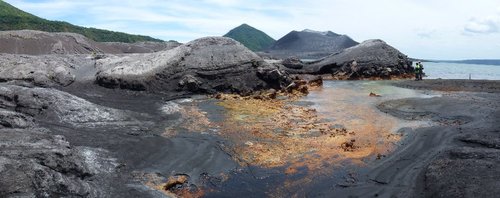 We had amazing views over the harbour from
the site of the Volcanic Observatory that
is keeping a close eye on the active Mt Tavurvur
before visiting the hot springs close to
Mt Taburvur. We travelled along the ash covered old airport which actually had aircraft and helicopters buried under ash in 1994, although they have since been recovered. We saw the Japanese WWII Bomber wreck and also the command bunker of Admiral Yamamoto, the Japanese commander during WWII. Finally, we visited the Historial Society in which there is a ‘museum’ of old photos and historical data. We walked around the open market and then
went into a 'supermarket' to see
the local GoGo Cola and machetes!
It’s a testament to the resilience of the townsfolk that they have rebuilt their town after each event especially with the lack of government support after the recent volcanic eruption. They are amazingly cheerful and most willing to stop in the street to talk to visitors.
As we departed that evening, we cruised past the active volcano, Mt Tavurvur that was still emitting smoke. | ||||||||||||||||||||||||||||||||||||||||||
 |
||||||||||||||||||||||||||||||||||||||||||













